#enantiornithes
Text
Imparavis attenboroughi Wang et al., 2024 (new genus and species)

(Type specimen of Imparavis attenboroughi [scale bar = 20 mm], from Wang et al., 2024)
Meaning of name: Imparavis = odd bird [in Latin]; attenboroughi = for Sir David Attenborough [British documentary presenter and conservationist]
Age: Early Cretaceous (Aptian), between 119–123 million years ago
Where found: Jiufotang Formation, Liaoning, China
How much is known: Nearly complete skeleton of one individual preserved with feather traces.
Notes: Imparavis was an enantiornithean, a group of bird-like, flying dinosaurs from the Cretaceous. Although they would have looked a lot like modern birds, most enantiornitheans had teeth. Imparavis was an exception in that regard, being one of the few known toothless enantiornitheans. Prior to its discovery, the only other enantiornitheans confirmed to have been toothless were the Late Cretaceous Gobipteryx and Gobipipus from Mongolia and Yuornis from China, making Imparavis one of the oldest known enantiornitheans to lack teeth. (The describers of Imparavis additionally reinterpret another enantiornithean from the Jiufotang Formation, Chiappeavis, as toothless as well.)
Imparavis may have spent time both in trees and on the ground, based on details of its hindlimb anatomy. Its wing bones exhibit pronounced muscle attachment points, suggesting that it might have been capable of rapid, powerful take-offs.
Reference: Wang, X., A.D. Clark, J.K. O'Connor, X. Zhang, X. Wang, X. Zheng, and Z. Zhou. 2024. First edentulous enantiornithine (Aves: Ornithothoraces) from the Lower Cretaceous Jehol avifauna. Cretaceous Research advance online publication. doi: 10.1016/j.cretres.2024.105867
156 notes
·
View notes
Text
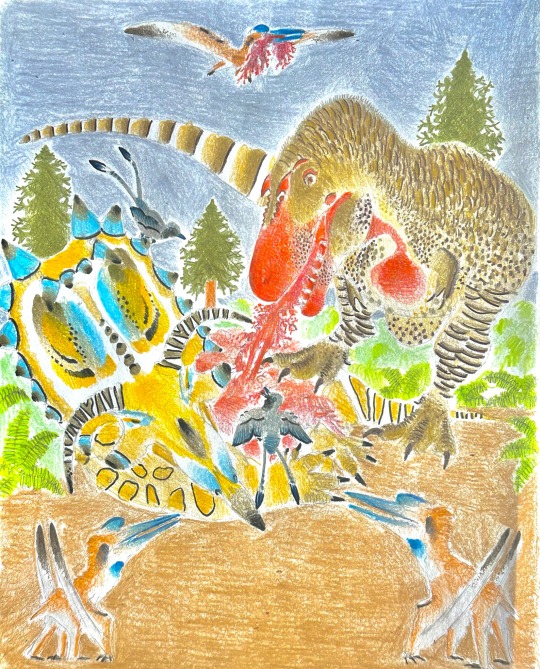
A Gorgosaurus libratus feasts upon a recently killed Spiclypeus shipporum 76 million years ago in what is now the Judith River Formation of Montana; Three small Azhdarchids and two Enantiornithids arrive to take scraps that the large predator has left behind.
#paleoart#dinosaur#dinosaurs#paleontology#gorgosaurus#dinosaur artwork#dinosaur art#enantiornithes#pterosauria#pterosaurs#pterosaur#late cretaceous#palaeontology#paleoblr#paleobiology#paleoillustration#paleobird#judith river formation#paleontology art#paleoartists on tumblr#paleoartist#spiclypeus#ceratopsidae#ceratopsian#tyrannosaurs#tyrannosaurid#tyrannosauridae#tyrannosauroidea#azhdarchid#azhdarchids
37 notes
·
View notes
Photo

Modern birds' upper beaks are made up mostly from skull bones called the premaxilla, but the snouts of their earlier non-avian dinosaur ancestors were instead formed by large maxilla bones.
And Falcatakely forsterae here had a very unusual combination of these features.
Living in Madagascar during the Late Cretaceous, about 70-66 million years ago, it was around 40cm long (1'4") and was part of a diverse lineage of Mesozoic birds known as enantiornitheans. These birds had claws on their wings and usually had toothy snouts instead of beaks, and many species also had ribbon-like display feathers on their tails instead of lift-generating fans.
Falcatakely had a long tall snout very similar in shape to a modern toucan, unlike any other known Mesozoic bird, with the surface texture of the bones indicating it was also covered by a keratinous beak. But despite this very "modern" face shape the bone arrangement was still much more similar to other enantiornitheans – there was a huge toothless maxilla making up the majority of the beak, with a small tooth-bearing premaxilla at the tip.
This suggests that there was more than one potential way for early birds to evolve modern-style beaks, and there may have been much more diversity in these animals' facial structures than previously thought.
———
Nix Illustration | Tumblr | Twitter | Patreon
#science illustration#paleontology#paleoart#palaeoblr#falcatakely#enantiornithes#opposite bird#avialae#bird#maniraptora#theropod#dinosaur#art#snootbird
1K notes
·
View notes
Text


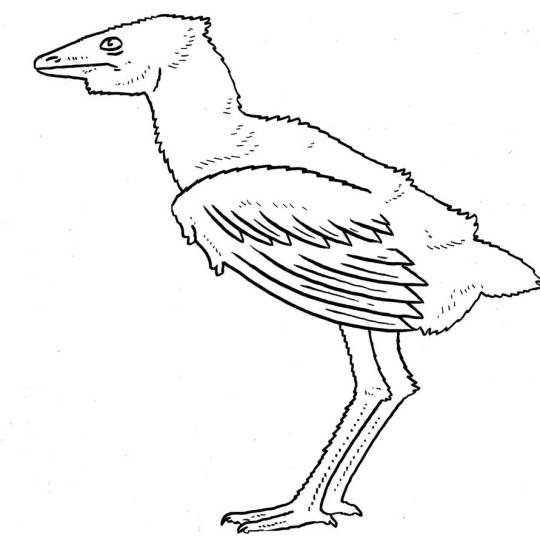
Commissions by Tim Morris to illustrate Lectavidae, a family of Late Cretaceous enantiornithean birds as recovered in several recent studies. Qiliania, Hollanda and Lectavis.
#paleoart#paleoblr#paleontology#palaeoblr#palaeontology#palaeoart#birds#dinosaur#dinosaurs#enantiornithes#enantiornitheans
10 notes
·
View notes
Text
my untreated sleep apnea was acting up buT I RETURN FROM MY ETERNAL NONRESTFUL SLUMBER to bring you our next dinosaur group race
enant groups based on Wang et al 2022 for my sanity
#dinosaurs#birds#polls#palaeoblr#hespeornithes#ichthyornis#enantiornithes#euornithes#gansus#apsaravis#longipteryx#pengornis#avisaurus
79 notes
·
View notes
Text
Early Cretaceous Jiufotang Formation
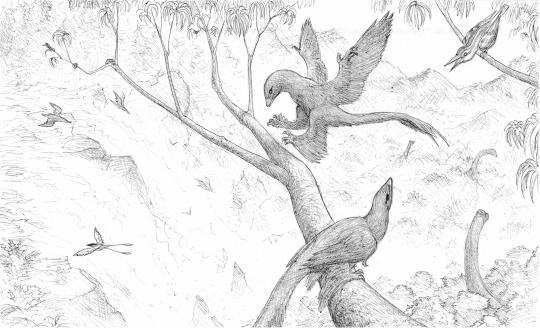
An illustration sketched with a ballpoint pen during my breaks at work (we've had a couple of slow days recently).
Based on some of the vertebrate fossils known from the Jiufotang Formation in China's Liaoning Province.
Foreground: several generic caterpillars, two Microraptor specimens, and a bird based on Longipteryx.
Background: one Confuciusornis, more Longipteryx-based birds, some generic titanosaurs.
#liaoning#china#early cretaceous#microraptor#confuciusornis#titanosaurs#longipteryx#enantiornithes#theropod#sauropod#feathered dinosaurs#birds#jiufotang formation#pen drawing#pen sketch#ballpointpen#paleoart#illustration#pen doodles
40 notes
·
View notes
Text
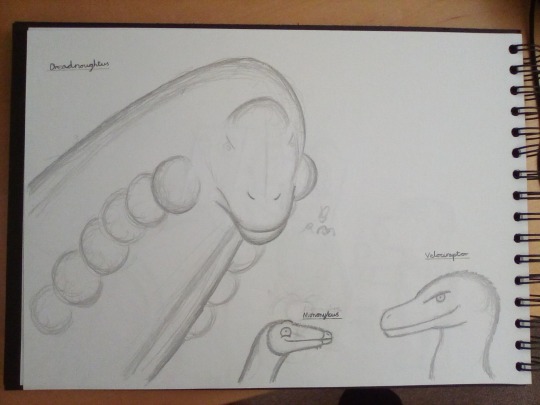
Prehistoric planet fanart. Just realised they're all from episode two.


#prehistoric planet#fanart#dinosaur#dreadnoughtus#mononykus#velociraptor#enantiornithes#sauropod#alvarezsaur#dromaeosaur#maniraptora
8 notes
·
View notes
Photo

Hey I draw a lot of birds, huh.
#birdblr#artistsontumblr#palaeoblr#enantiornithes#one piece#trafalgar law#warbler#grosbeak#stork#wilson's warbler#artists on tumblr#pine grosbeak#white stork#calavera#sugar skull#art vs artist#artvsartist2022
42 notes
·
View notes
Text

“The Ritual”
Two bull Furcatoceratops fight for mating rights, unaware they’re being watched by an enantiornithe and a female of their species.
53 notes
·
View notes
Text
So scared of damaging books but i want to highlight this stuff so bad....
4 notes
·
View notes
Text
Castignovolucris sebei Buffetaut et al., 2023 (new genus and species)
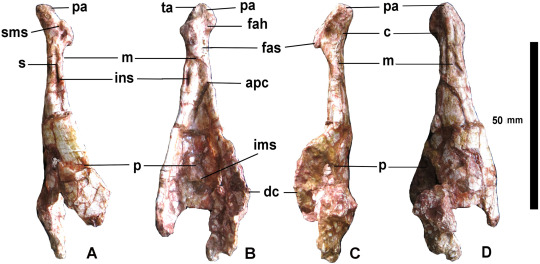
(Type coracoid [shoulder bone] of Castignovolucris sebei, from Buffetaut et al., 2023)
Meaning of name: Castignovolucris = Castigno valley bird [in Latin]; sebei = for Stéphane Sèbe [discoverer of the original fossil]
Age: Late Cretaceous (Campanian?)
Where found: Castigno valley, Occitanie, France
How much is known: A right coracoid (shoulder bone).
Notes: Castignovolucris was an enantiornithean, a lineage of bird-like, flying dinosaurs from the Cretaceous. Its coracoid was comparable in size to that of a Canada goose (Branta canadensis), making it one of the largest known enantiornitheans.
Reference: Buffetaut, E., D. Angst, and H. Tong. 2023. A new enantiornithine bird from Upper Cretaceous non-marine deposits at Villespassans (Hérault, southern France). Annales de Paléontologie 109: 102585. doi: 10.1016/j.annpal.2022.102585
41 notes
·
View notes
Text

spectember day 1 Oldest spec critter
this beast hails from a now gone future earth spec evo i had in middle school and its the oldest one i can remember this was originally a macropredatory social corvid that hunted like 90s depictions of dromeosaurs it has now been changed to be a predatory Enantiornith that resembles phorasrachids which shockingly kept most of its design intact from what i can remember
#speculative evolution#speculative zoology#spec evo#original species#speculative biology#spectember#spectember2023
17 notes
·
View notes
Text
Wish I could remember why I made this note under the heading for Enantiornithes that just says "Wizards, obviously"
2 notes
·
View notes
Text
Enantiornithean Earth
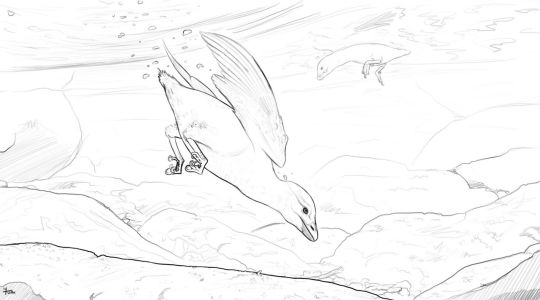

Yungavolucris and Halimornis by midiaou and xenopleurodon respectively. Both are real life Cretaceous taxa, showing that these birds were already diversifying into aquatic ecologies.
Enantiornithes are a group of extinct flying theropod dinosaurs that you could reasonably call birds, being the sister group of Euornithes (the group that includes modern birds). However, they differ from our birds in a variety of ways (their name literally means “opposite birds” for a reason):
Several skeletal details, including a tarsometatarsus that is either unfused or half-fused (beginning at the top rather than at the bottom, the opposite than in modern birds), an articulation of the scapula and coracoid that is oppositely shaped (hence the name; the coracoid joint is convex and the scapula joint is concave shaped in enantiornitheans, while the opposite happens in modern birds), a shallower sternum keel with bizarre antler-like projections (which, combined with large crests in their humerus, suggests the muscles lifting the wing were attached to the back as in bats and pterosaurs, rather than all flight muscles being attached to the keel as in modern birds), and a large, rod-shaped pygostyle (which will be relevant later).
Usually toothed jaws instead of beaks, though some taxa did become toothless. Even then, these weren’t capable of cranial kinesis like modern birds (i.e. watch a duck or your pet parrot yawn and you can see them moving their upper jaw; enantiornitheanss are many things but they’re not that abominatory).
All known taxa thus far seem to have been superprecocial: ample sites show buried eggs like those of megapodes, and the hatchlings were already fully flight capable soon after birth.
Unlike modern birds, enantiornitheans lacked a tail fan. They either had contour feathers on their butt like in the rest of the body or had long, streamer-like display feathers, also found in other Cretaceous bird groups but not in modern birds. Some species did have retrices, but they were arranged along the rod-like pygostyle and were not a movable fan, so essentially they were a variation of the tail fronds seen in Archaeopteryx and kin. Note that this did not make flight harder; even modern birds can fly reasonably well without a tail.
Why the opposite birds died out at the end of the Mesozoic while ours survived is unclear. Often, a bias towards arboreal niches is cited, as many enantiornitheans were in fact arboreal, but as the examples above show they also occured in marine and terrestrial niches alongside the ancestors of modern birds. Another possibility is their supreprecocial habits, meaning a more complex ecology as the birds matured since they were already functionally independent since birth, and this did hinder reptiles like lizards so the answer might lay there.
Or, most likely, it was just dumb luck.
Anyways:

Senmuruy hvare by Dave García. A four meter wingspan predator vaguely analogous to the golden eagle and cinnereous vulture, soaring across the northern hemisphere for corpses to dig its long snout into or live mammals and birds to sink its talons into.
Many Cretaceous enantiornitheans were already suspected of being raptorial, so it is only natural that, once pterosaurs were gone, they’d increase in size. Some reach wingspans of fiver meters, but most are more moderately sized at 1.5-3 meter adult wingspans. Smaller sizes are handled by the young, which like all enantiornithes can already fly since birth and occupy distinct ecological niches. Most species protect the nest and moderate its temperature like our megapodes, and a few even display mild parental care, allowing the young to remain in the vicinity until they’re large enough to be competition.

Euodontopteryx anatosuchus, a six-meter wingspan pelagic soarer that occurs in tropical and temperate waters, using its massive wings to ride on thermals like frigatebirds while landing to feed like albatrosses. Males sport streamer-like display feathers. By Dave García.
As noted above, some Cretaceous enantiornitheans were already aquatic, so this trend continued. Some species became divers, mostly wing propelled and some even flightless like our penguins, while others inversely invested in supreme gliding abilities, able to either ride thermals like frigatebirds or wave winds like albatrosses.
The most impressive species are reccord beaters. Divers can be as tall as a man when on land, while soarers can reach wingspans of over 7 meters, competing with flying multituberculates for largest living flying animals. Both groups tend to have long, toothy maws, the teeth alloted into a single row rather than individual sockets; this condition is known in both extinct sea birds and reptiles as well as some living cetaceans, and is known as aulacodonty.
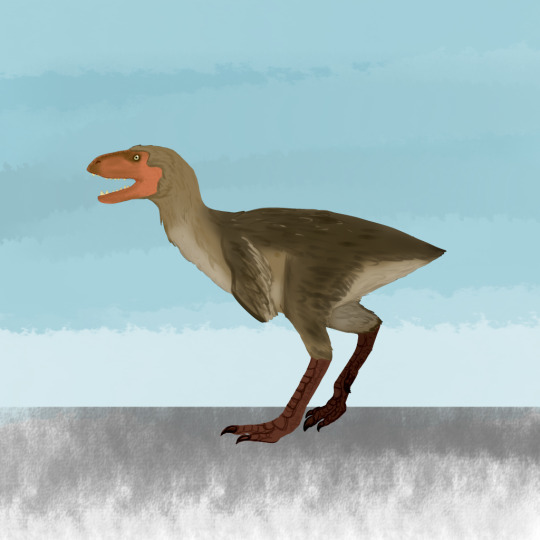
Ghaltavis rex, a three meter tall predator that stalks African and Asian savannas. An apex predator of its own right, an echo of the distant unrelated tyrannosaurs in the form of a bird. By Dave García.
At least one real life enantiornithean, Elsornis, appears to have been flightless. It’s descendents were quick to occupy roles previously taken by non-avian theropods, from ratite-like herbivores to formidable predators that look like the fusion of a terror bird and a tyrannosaur, using their powerful jaws to crush bone.
The relatively long enantiornithean pygostyle allowed them to balance their pelvis/femur joints (a known size inhibittor in our birds) and grow to sizes larger than our timeline’s birds, though species above a ton are fairly rare seeing as mammals got their footing as well.
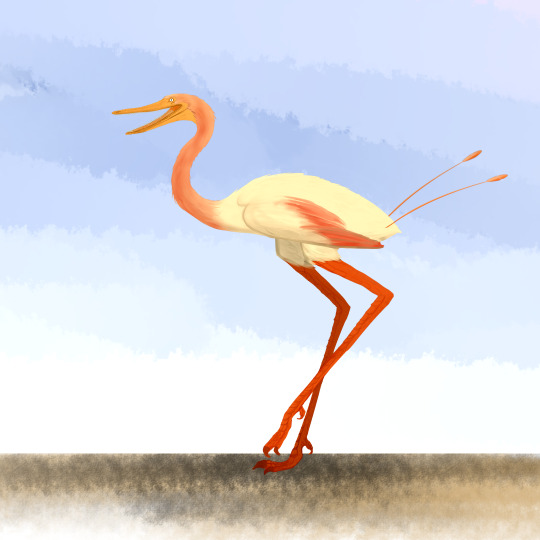
Bennu seti, a filter-feeding bird from Africa, Eurasia and Australia. Like flamingos it metabolizes carotenoids, giving it an orange colouration. By Dave García.
The Cretaceous Lectavis had long legs in some aspects convergent with those of flamingos. Thus, several enantiornitheans developed wading ecologies, ironically more associated with their euornithean competitors. Some became probers, dipping their maws (or toothless beaks) into the subtrate, while others became piscivores like herons or aquatic plant specialists like some cranes and magpie geese.
Most spectacular is a filter-feeding clade, Bennuidae. These birds modified their teeth into thin, delicate strands like some Cretaceous pterosaurs, and feed by swallowing water and expelling it, trapping prey in the teeth and keratinous spikes in the tongue. Having the nostrils still at the end of the snout, these birds usually feed in a different position from flamingos: rather than upside down, the lower jaw is submerged, in a manner similar to avocets.
Like most opposite birds the young are superprecocial, starting as plover-like birds before transitioning into a filter feeding lifestyle months later. Though some taxa form protective creches like flamingos, though unlike them they do not feed the young.
Like many of our shorebirds, these are continuous flappers, displaying remarkable endurance as they fly non-top for days in their migrations.
#enantiornithes#enantiornithean#enatiornithine#bird#birds#dinosaur#dinosaurs#paleoblr#palaeoblr#speculative zoology#speculative evolution#speculative biology#spec evo
26 notes
·
View notes
Note
dweloveenantiornithes march madness
opposite bird madness might be so much fun the entire internet thinks palaeoblr is too unhinged
15 notes
·
View notes
Note
Okay but as a fellow bird obsessed person I NEED to know if you have a passing fixation on prehistoric raptors because that happened to me reccently where I went "man I learnt so much about birds...I need more" so I just started looking at beta birds fhdjsvjs
YES! SAME! but bro it was very much NOT in passing, i've been a theropod nerd since i was like seven years old.
i've been on the "MORE DINOS" propaganda juice for a while lmao. it's a pretty pervasive thing in my hermitcraft grian design (and by extension most other "avian" designs as well) because early raptor anatomy is just so much easier to blend with humans than modern birds
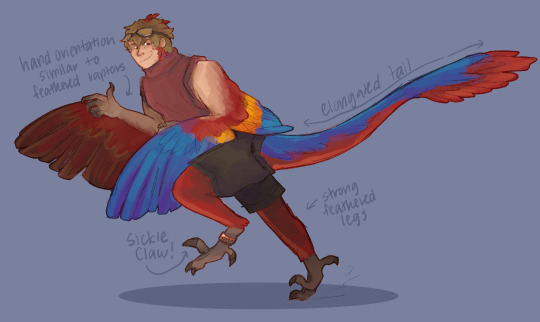
but yes! the entire saurian family tree is WILD. avian dinosaurs are popular ones but there are some fun relatives like toothed seabirds (pelagornithids) and the "opposite birds" (enantiornithes) that are just so fascinating.
they recently started reorganizing the troodon taxon too (as it was basically used as a catch-all for any raptors that didn't fit existing families and genus), so we might get even more prehistoric raptor groups in the future
i've just been latching onto PBS EONS videos for my avian dinosaur fix so far. but holy shit if you haven't, go watch Dead Sound's Dinosauria series and Making of follow-ups. he's an incredibly talented storyteller and is a god at integrating scientific fact with fiction. while he does cover all dinosaurs, not just avian ones, he's very knowledgable about the paleontology scene and i learned so much by just hearing him talk about the dinosaurs he was covering
#hermitcraft#grian#bird art#god dinos are just the best#you know youve reached critical bird nerd levels when birds just ARENT ENOUGH
139 notes
·
View notes